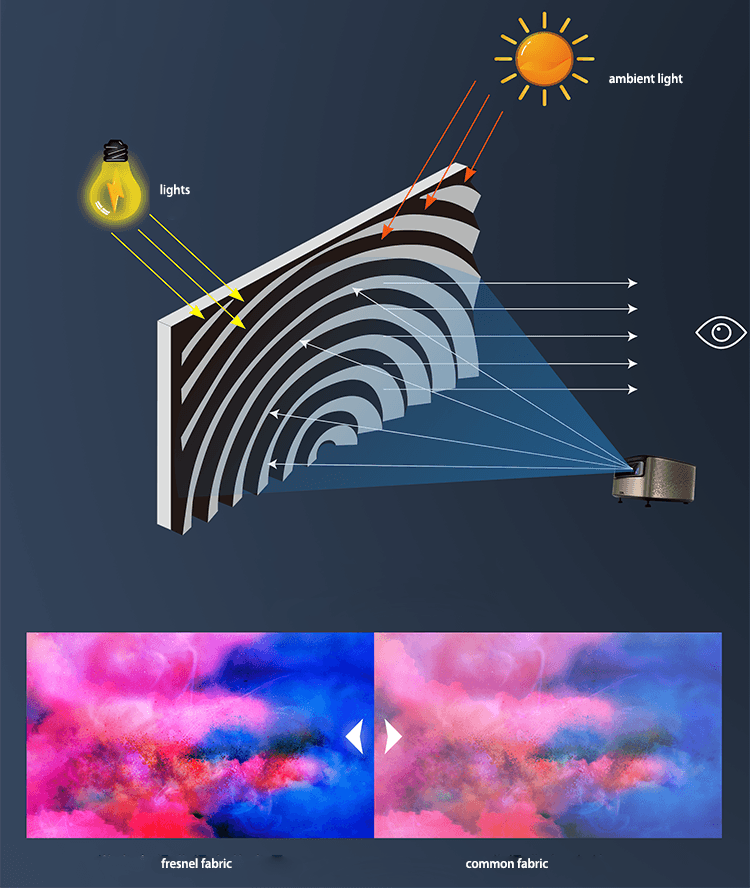Anti-Light Projection Screens: Market Analysis & Trends
Anti-Light Projection Screens: Market Analysis & Trends
1. Types of Anti-Light Screens
- ALR (Ambient Light Rejecting) Screens: Use multi-layer optical films to reject side/top light.
- CLR (Ceiling Light Rejecting) Screens: Optimized for overhead lighting environments.
- UST (Ultra Short Throw) Screens: Specialized for laser/UST projectors with high gain surfaces.
- Fresnel Screens: Micro-structured surfaces for directional light control.
2. Material Analysis & Performance
| Material | Advantages | Disadvantages | Light Rejection |
|---|---|---|---|
| PET Optical Films | High contrast, wide color gamut | Limited viewing angles | Excellent (90%+) |
| Metal Coated | High brightness gain (30%+) | Hard to store, high cost | Very Good (85-90%) |
| Nano-Coated Fabric | Wide viewing angles, eco-friendly | Lower light rejection | Good (75-85%) |
| Black/Gray Grid | Balanced price-performance | Color shift risks | Excellent (88-93%) |
3. Key Performance Comparisons
| Screen Type | Brightness Gain | Viewing Angle | Installation | Cost Level |
|---|---|---|---|---|
| ALR Screens | 1.2-1.5x | 60-80° | Complex | High |
| CLR Screens | 1.0-1.2x | 100-120° | Moderate | Medium |
| Fresnel Screens | 1.5-2.0x | 40-60° | Fixed Frame | Premium |
4. Future Market Trends
- Smart Integration: Auto-adjusting screens with light sensors (growing 25% CAGR)
- Eco-Friendly Materials: Recyclable nano-coatings gaining traction
- Hybrid Solutions: Combined ALR+CLR technologies for multi-directional light rejection
- 4K/8K Optimization: Ultra-fine texture surfaces for high-res projection
- Price Reduction: 30% cost decrease expected by 2027 through mass production
5. Strategic Recommendations
- Focus on modular designs for easy installation
- Develop entry-level ALR screens for price-sensitive markets
- Partner with laser projector manufacturers for bundled solutions

